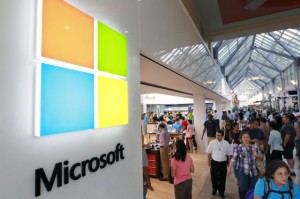Microsoft has sold more than 60 million Windows 8 licenses so far, a number that is “roughly” in line with the performance of Windows 7 at the same stage of its release three years ago, according to Tami Reller, CFO and Chief Marketing Officer of the Windows Division.
“We feel good about what we’ve been able to accomplish,” Reller said on Tuesday at a presentation at the JP Morgan Tech Forum, adding that there is “so much more opportunity ahead.”
There has been debate in the industry about the initial sales performance of Windows 8, which began shipping in October and features a radically redesigned user interface optimised for touch devices like tablets.
For example, NPD Group said in late November that the new OS had gotten off to a “slow start” among consumers.
Asked about this, Reller said that Windows 8 has been meeting Microsoft’s sales expectations all along, and that the high level of demand specifically for touch devices with the new OS has “surprised a lot of people.”
Unfortunately, that caused an initial shortage of such devices. “Frankly, the supply was too short,” she said at the event, which was held at the CES show in Las Vegas and where she answered questions from a JP Morgan analyst.
There were other distribution issues. “There was some misalignment between where products were distributed and where the demand was,” she said.
Microsoft made adjustments, and is still making them, she said. Many Windows 8 tablets running x86 chips are just starting to hit the market, while some tablets running Windows RT — the Windows 8 version for ARM chips — didn’t get the type of distribution “that would have been ideal,” she said.
Windows 8 is the biggest, most important project for the OS team since Windows 95, and the sales success of such an ambitious endeavour can’t be judged only by its first market outing, since it will go through “multiple selling seasons,” she said.
The 60 million-plus licenses include those sold to OEM hardware partners for their new machines and also those sold to end users to upgrade their existing computers, which is the same methodology Microsoft has used to measure Windows 7 sales, she said.
Microsoft has high hopes for its upcoming, Microsoft-branded Surface Pro tablet, which will run Windows 8 on an Intel Core i5 processor, and complement the already available Surface RT, which runs Windows RT, she said.
The Surface Pro “is a PC that also does an incredible job as a tablet,” she said.
Asked specifically about Windows 8 sales to businesses, Reller acknowledged that “Windows 7 deployment remains really the big activity in enterprises.”
Windows 7 has been installed now on more than 60 percent of commercial Windows PCs, she said. With Windows XP support set to expire next year, most businesses have either recently finished moving to Windows 7 or are in the process of doing so, according to several industry market researchers.
Microsoft includes companies of all sizes in its definition of the commercial market, from its biggest 2,000 enterprise customers to small businesses with five employees, she said.
With Windows 8, Microsoft expects to significantly improve its minuscule market share in the tablet market, which has been on fire since 2010 and where Apple’s iPad and Android tablets rule both among consumers and businesses.






